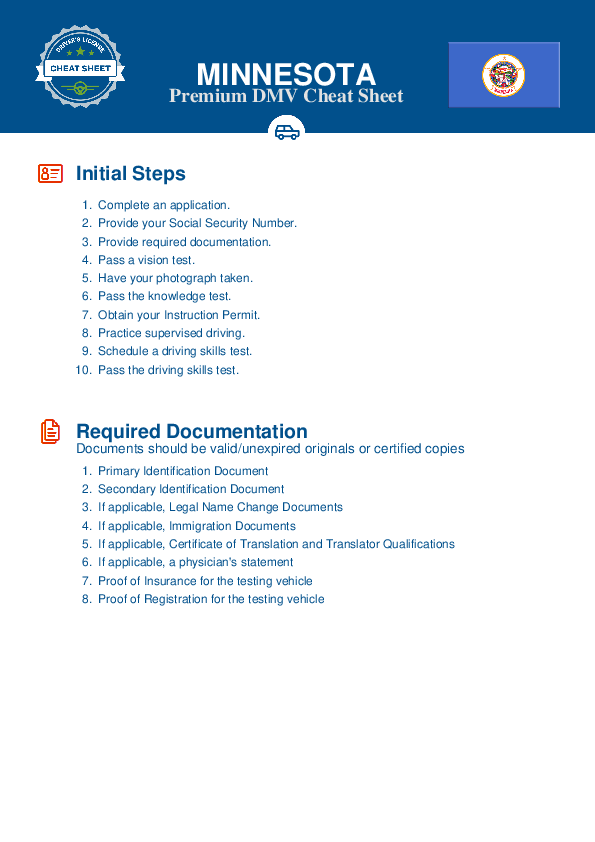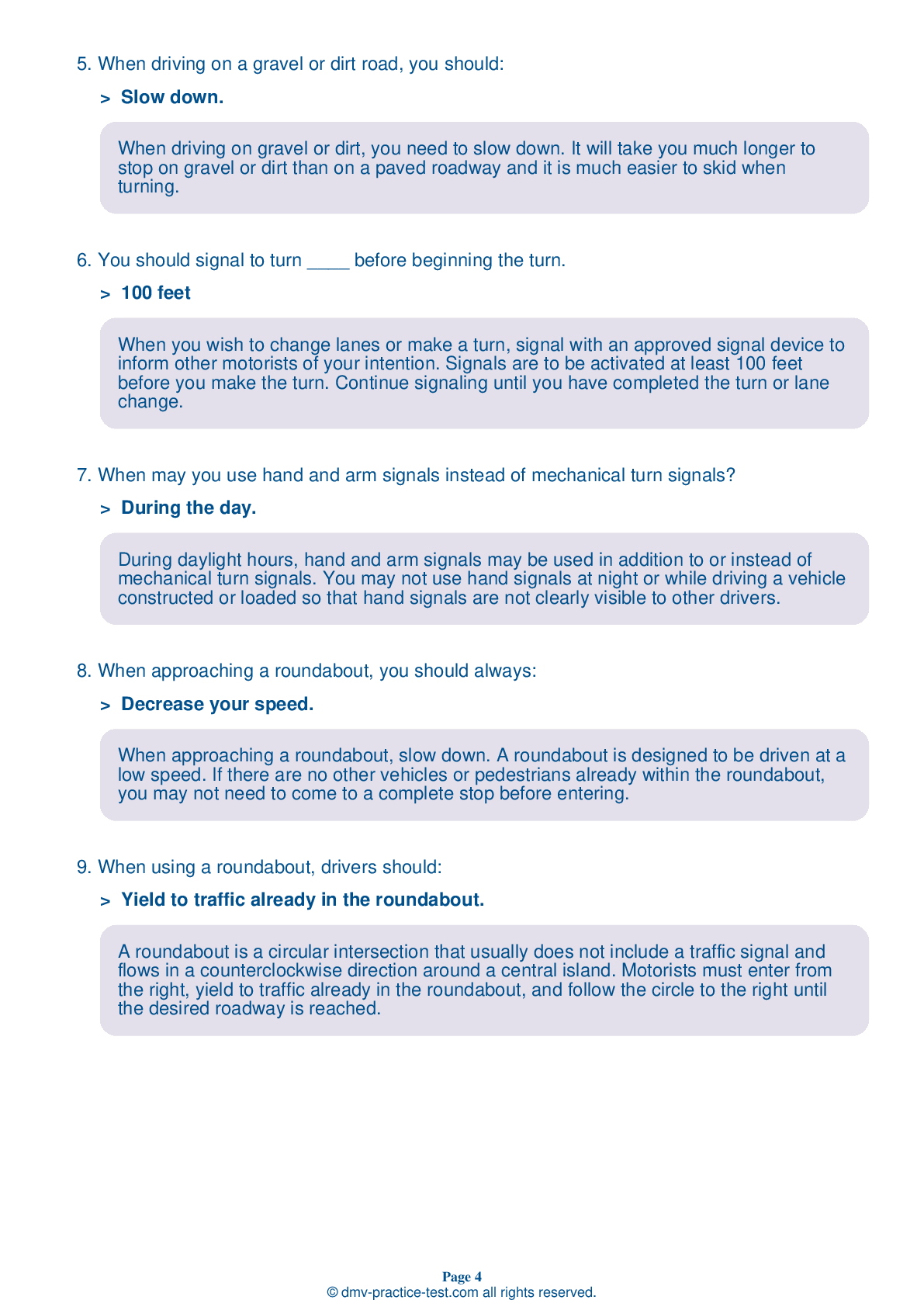FREE Minnesota DMV Practice Test #11 Page 2 of 5
The Minnesota DMV practise examinations have been updated for January 2025. It includes questions based on the Minnesota Driver Handbook's most essential traffic signals and laws for 2025. Use actual questions that are very similar (often identical!) to the DMV driving permit test and driver's licence exam to study for the DMV driving permit test and driver's licence exam.
On the practise exam, each question gets a tip and explanation to help you remember the concepts. The written component of the official Minnesota DMV test will include questions about traffic rules, traffic signs, and driving statutes, as well as knowledge from the Driver Handbook.
To obtain a passing grade, you must correctly answer 32 of the 40 questions. To help you prepare for your instruction permit or driver's licence, take our Minnesota DMV practise test.
The DMV exam is available in several languages.
Using any kind of testing assistance will result in an automatic fail, and the DMV may take additional action against your driver's licence, so stay away from it.
9 . Roads become very slippery:
Pavement can become very slippery within the first 10 to 15 minutes of a rainstorm because the rain causes oil in the asphalt to rise to the surface of the road. This problem becomes even worse in hot weather. The heat combined with the water causes more oil to rise to the road surface.
10 . If involved in an accident, a driver should:
If you are involved in an accident, you must stop at or near the scene. Move your vehicle out of the way of traffic, if possible. Do not stand or walk in traffic lanes as you could be struck by another vehicle. Turn off the ignitions of wrecked vehicles.
11 . Crowding a motorcycle is illegal.
Crowding a motorcyclist is illegal and dangerous. Never attempt to drive alongside a motorcycle in the same lane.
12 . When passing an emergency vehicle stopped on the side of the road, drivers should:
The Move Over Law protects law enforcement officers, emergency workers, tow truck drivers, sanitation workers, and utility workers stopped along roadways while performing their jobs. You must vacate the lane closest to a stationary emergency vehicle, tow truck, sanitation, or utility vehicle. If you cannot move over safely, you must slow down.
13 . A double solid yellow line down the center of a two-lane road indicates:
Yellow lines are used to separate traffic moving in opposite directions. Solid lines indicate that drivers are not permitted to pass.
14 . You can drive above the posted speed limit to complete a pass when driving on a roadway with a speed limit under 55 mph.
One multilane roadways where passing is permitted, you may pass on the left side of vehicles ahead of you. You should not exceed the posted speed limit to complete a pass unless the speed limit is 55 mph or above.
15 . You must yield for emergency vehicles:
You must yield the right-of-way to any emergency vehicle that is using its siren or flashing lights.
16 . If an oncoming driver is heading toward you in your lane, you should:
If another vehicle is approaching you head-on in your lane, you should first honk your horn to attract attention. If the other driver does not move over, try to escape to the right. If you swerve left and the other driver corrects at the last instant, you will still crash. If a collision is unavoidable, brake firmly and steadily. Every mile per hour you slow down will reduce the impact.
Need Car Insurance? No problem!
Compare the best rates in Minnesota and find a personalized policy that meets your needs.
1. Are You Currently insured ?
2. Married ?
3. Do you own your Home?
4. Do you have more than 1 car ?
5. Have you or a Family Member Honorably Served in U.S. Military ?
6. Your Name
7. Age
8. Zip code
IMPORTANT REMINDER:Auto Insurance is Mandatory to drive in Minnesota. Get covered before you hit the road to avoid any fines.
Ranked by best match



